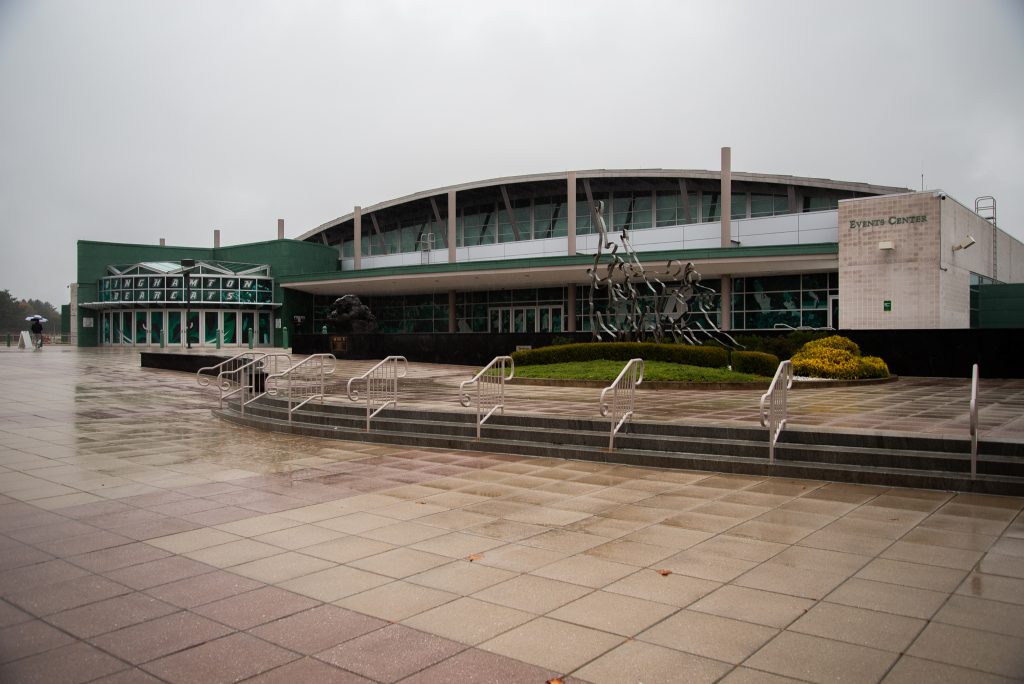Ahead of a blockbuster settlement between college athletes and the National Collegiate Athletics Association, Binghamton Athletics will tighten its budget.
Settlement documents, filed in federal court in late July, await approval from a judge, advancing a process announced in late May. If approved, the final settlement, worth approximately $2.78 billion, will end legal proceedings in three class action lawsuits — House v. NCAA, Hubbard v. NCAA and Carter v. NCAA — that center around back pay for college athletes and the future benefits afforded to them through a revenue sharing system.
Plaintiffs have claimed that by prohibiting payments to them, the NCAA violated U.S. antitrust law.
Though the lawsuits mainly concern the NCAA and its five most prominent conferences, mid-major conferences, like the America East, are responsible for a portion of the settlement. Preliminary estimates anticipate the NCAA will cover 41 percent of the multi-billion sum and the Power 4 conferences — the Big Ten, Big 12, Southeastern Conference, Atlantic Coast Conference and the formerly included Pac-12 — will pay 24 percent.
The other five major college football conferences will pay 10 percent and second-tier football conferences will contribute about 14 percent, while non-football conferences, like the America East, will owe 12 percent.
A University Athletics representative told Pipe Dream that beginning in 2025, approximately $310,000 per year from the America East and the NCAA will be withheld from the University’s budget. He added that officials have not received precise figures from the conference office.
An America East spokesperson said that “with the settlement not final and the situation still fluid, we don’t know the exact impact so don’t have any figures to pass along.”
“We will have to tighten our belts and generate additional revenue from giving, basketball ticket sales and corporate partnerships,” Eugene Marshall Jr., the University’s athletic director, said in July.
In the court filing, attorneys for the plaintiffs proposed a formula for dividing the settlement funds to members of the class — all Division I athletes between 2016 and the present. It accounts for the athlete’s school and how many minutes they played.
The settlement also includes lifting restrictions on scholarships, establishing roster limits and allowing colleges and universities to pay their student-athletes directly through name, image and likeness deals.
“The settlement will also reshape the economic landscape of college sports, shepherding in changes to Defendants’ longstanding and aggressively defended rules and achieving injunctive relief that will enable future college athletes to receive tens of billions of dollars in new forms of benefits over the next ten years,” attorneys for the college athletes wrote in the court filing.
Rules governing NIL deals, core to the legal proceedings, were adopted in 2021, marking a massive change to college sports and the NCAA, which has long considered college athletes amateurs. By allowing college athletes to earn financial compensation for the first time, the NCAA succumbed to pressure from state legislators and decades of legal challenges to its rules.
Though the settlement has won the approval of the parties, opposition has emerged from other groups representing former and current college athletes across the country, claiming it treats female athletes unfairly and would allow the NCAA to escape further antitrust litigation. After they submitted their objections to the court, the NCAA and two attorneys who negotiated the settlement for the plaintiffs defended it, citing its potential to benefit future generations of athletes.
The presiding judge, Claudia Wilkin, has scheduled a preliminary hearing for Sept. 5, and a final ruling is expected in March 2025.



